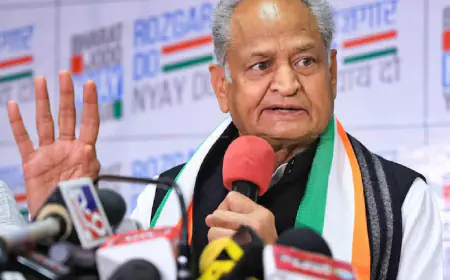In 2014, one dollar was equal to 60 rupees: Record broken, value of 1 dollar became 85 rupees
The Indian rupee opened almost stable the day after closing at a record low against the dollar. US Federal Reserve's rate cut signals put pressure on the rupee. Indian bond yields also remained stable. Possible intervention by the RBI may curb the decline.

INDC Network: Business: In 2014, one dollar was equal to 60 rupees: the record breaking price of 1 dollar became 85 rupees
Indian Rupee: Between Stability and Decline
The Indian rupee opened almost flat against the dollar on December 20. It closed at 85.08 level in the previous trading session. Behind this stabilization of the rupee is speculation of possible intervention by the Reserve Bank of India (RBI).
On December 19, the rupee hit a record low after the US Federal Reserve hinted at a rate cut. Despite this, the rupee has been the least volatile of Asian currencies.
Stable performance of bond yields
The Indian 10-year benchmark bond yield opened at 6.783%, slightly lower than last session's 6.786%.
Data in the table:
| Date | Rupee level (against the dollar) | 10-Year Bond Yield (%) |
|---|---|---|
| December 19 | 85.08 | 6.786 |
| December 20 | 85.08 | 6.783 |
Influence of the Federal Reserve
The US Federal Reserve on Wednesday cut its interest rate to a target of 4.25%-4.5%. It was the third time in a row that the Fed cut its key policy rate.
The Fed has indicated the possibility of two more rate cuts in 2025, raising concerns in global markets.
Performance in the calendar year of decline of Rs
During 2024, the Indian rupee has fallen by more than 2% so far. However, it has been the most stable of Asian currencies.
There are several economic, global, and policy reasons for the continued weakness of the Indian rupee against the dollar. Looking at the position of the rupee since 2014, it is clear that this problem is not only domestic, but also global.
The main reason for the weakness of the rupee
1. International factors
- Dollar Strength: The strengthening of the US dollar puts constant pressure on the Indian Rupee. The dollar has become an attractive investment option due to interest rate hikes by the US Federal Reserve, reducing demand for other currencies.
- Global economic uncertainty: The Covid-19 pandemic, the Russia-Ukraine war, and fears of a global recession have forced investors to turn to safe-haven currencies like the dollar.
- Crude Oil Prices: India is dependent on imports for its energy needs. A rise in crude oil prices increases import spending, which reduces demand for the rupee and weakens it against the dollar.
2. Domestic economic policies
- Current Account Deficit: India's imports, especially energy imports, are higher than exports. This widens the current account deficit and puts pressure on the rupee.
- Decline in Foreign Investment: Foreign investment (FDI and FPI) in India has declined, affecting foreign exchange reserves.
3. Impact of policy decisions
- After demonetisation in 2016 and implementation of GST in 2017 , economic activities slowed down. Due to this, industrial production and trade were affected.
- Interest rates and inflation: High inflation and relatively low interest rates have attracted foreign investors to other markets.
Why did the rupee weaken after 2014?
Major Factors Affecting Rupee Position Since 2014:
- Dependence on imports: India's imports, especially energy, have increased.
- Global events: Brexit, the US-China trade war, and recent wars have increased global volatility.
- Fiscal Deficit: Fiscal deficit increased due to higher borrowing and spending by the government.
- RBI's intervention: The Reserve Bank of India intervened to maintain the stability of the rupee, but this was of limited effectiveness in the face of global conditions.
the way forward
- Self-reliance: India's dependence on imports should be reduced and focus should be on increasing domestic production and exports.
- Reducing dependence on the dollar: Increasing the use of other currencies (eg Euro, Yuan) for trade.
- Attracting Foreign Investment: Encouraging FDI and FPI by creating stable policies and favorable environment.
Although India's control over global economic factors is limited, domestic reforms and economic stability could help strengthen the rupee.
What's Your Reaction?












































































































































































